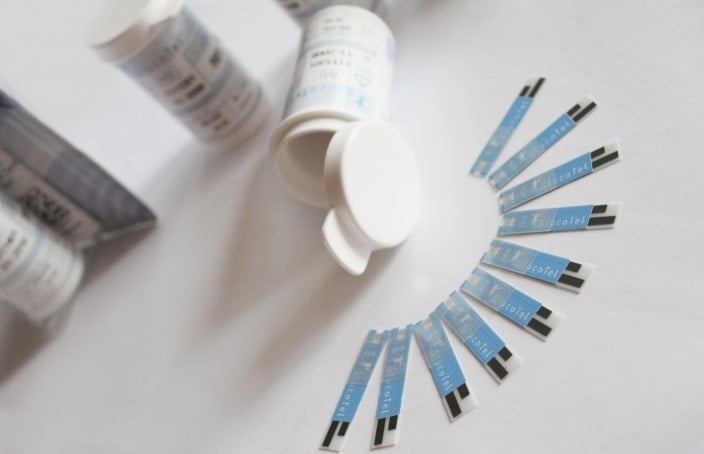There has long been the debate of whether people with diabetes can use expired test strips. So, can you?
Rather than simply answering yes or no, it is important to first understand what exactly a test strip is, and why the argument over expiration first came to pass.
The key aspect is enzymes. Enzymes, which are proteins made by cells in all living organisms, coat the end of the strip, which is made of plastic. These enzymes are either glucose oxidase or glucose dehydrogenase.
The enzyme reacts with the glucose in a person’s blood and converts it into an electrical current. Upon the electricity being sent through the strip, the glucose concentration is presented by the blood glucose meter.[1]
Here’s the thing, though. Enzymes break down over time.
The activity of enzymes can decrease following exposure to humidity or extreme temperatures. This can alter the accuracy of glucose readings long before a scheduled expiration date.
Subsequently, errors can begin to appear with rogue readings of either a high or low nature. Because the enzymes break down, manufacturers therefore place an expiration date on the strips.
This is a necessity for manufacturers. Even if they are confident the strips will display accurate readings for x amount of time, one faulty test strip could lead to a diabetic patient making a management decision that could cost them their lives.
The dates may differ depending on how the strips are made. The use of different enzymes can provide greater accuracy with a shorter life or vice versa. Some companies may go for the cheapest alternatives.
The accuracy of expiration dates
No-one is expected to believe that an expiration date scheduled for a Wednesday will enable to you test accurately on Tuesday, and then not again the day after.
However, anecdotal evidence suggests that whether a strip is a day, a week or month expired, you may not be able to observe differentiation in test readings.
https://www.youtube.com/watch?v=qwbK6UsS0BI
The experiment above compared seven-month expired One Touch Ultra Blue test strips to current test strips of the same brand.
Using the same blood sample on the One Touch Ping meter, the expired strip read 101 mg/dl (5.6 mmol/L), while the current strip read 98 mg/dl (5.4 mmol/L).
So, there wasn’t a lot of difference, and therein lies the debate. If you use an expired test strip, are you guaranteed to receive an inaccurate reading?
The answer is no, but you are much more likely to receive a faulty reading as the enzyme wears down over time. An expired test strip of two years, for example, is extremely likely to provide an inaccurate result.
Can expired test strips be used as a last resort?
Practically, if test strips have been stored properly and avoided damage, they could be used for a small period of time beyond their expiration date.
However, you should be prepared for an inaccurate reading. If you know the strip is expired, you take the risk by managing your diabetes based off that result.
To guarantee accuracy, it is best not to use expired test strips.
Have you ever received unusual test readings from expired test strips? Let us know in the comments section below.
[1] https://www.diabetesforecast.org/2012/jul/anatomy-of-a-test-strip.html




